South Dakota State testing excavator to extract ice crystals from the moon in NASA contest
BROOKINGS — What’s happening in a small gravel patch on the edge of a quarry in Brookings could have major interstellar impacts for years to come.
There, just inside the entrance for sand & gravel supplier L.G. Everist, a group of engineering students and faculty from South Dakota State University known as the Space Trajectory team are one of 15 finalists in NASA’s Break the Ice Lunar Challenge.
On Wednesday, the Space Trajectory team marked day 10 of 15 testing its excavation process that could be chosen by NASA to extract ice crystals buried under lunar soil on the moon.
The challenge is part of NASA’s mission to develop new technology that could support a sustained human presence on the moon by the end of the decade, as NASA is scheduled to send astronauts to the surface of the moon in 2024 and has identified some technology gaps with harvesting and moving large quantities of resources on the moon.
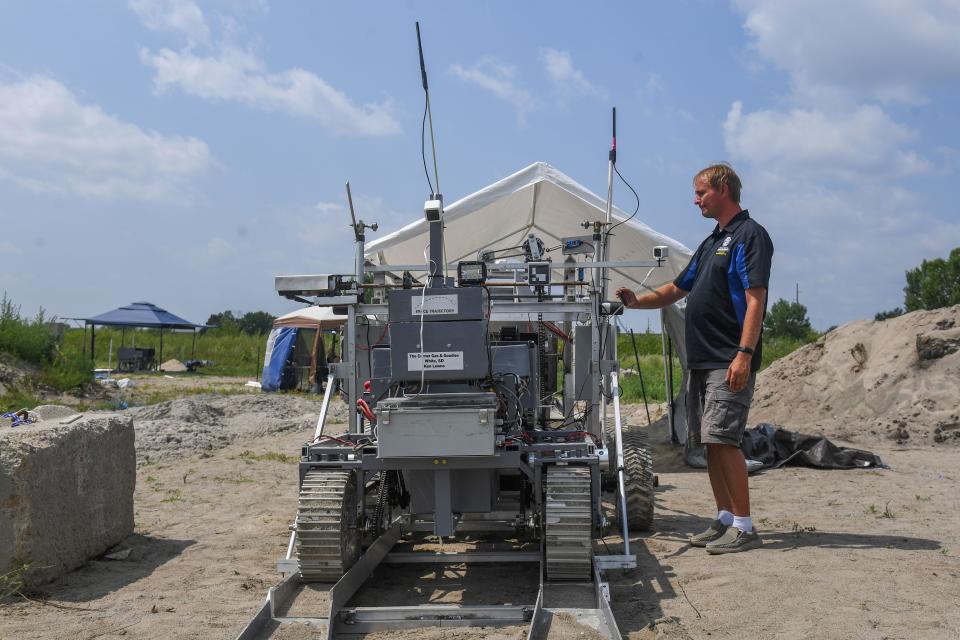
Judges from NASA visited the testing site Wednesday, and project advisor Todd Letcher, an associate professor of mechanical engineering, said he and his team felt good about the visit.
“We definitely got the feeling that they enjoyed the visit, and thought things were going pretty well,” Letcher said.
'South Dakota's footprints will be on the moon'
In its announcement of the challenge, NASA reported the excavation systems will need to withstand harsh environments in permanently shadowed regions at the moon’s south pole where ice has been observed, and where the targeted landing site for crewed Artemis missions will be.
Space Trajectory’s set-up includes a large excavator “the size of something like a Honda Civic,” Letcher said, that will sit at the bottom of a lunar crater and grind away at icy moon dirt, or regolith, found in the coldest and darkest places on the moon’s surface. At the Brookings testing site, the excavator drills away at an 8-by-150 foot soft concrete patch resembling the regolith.
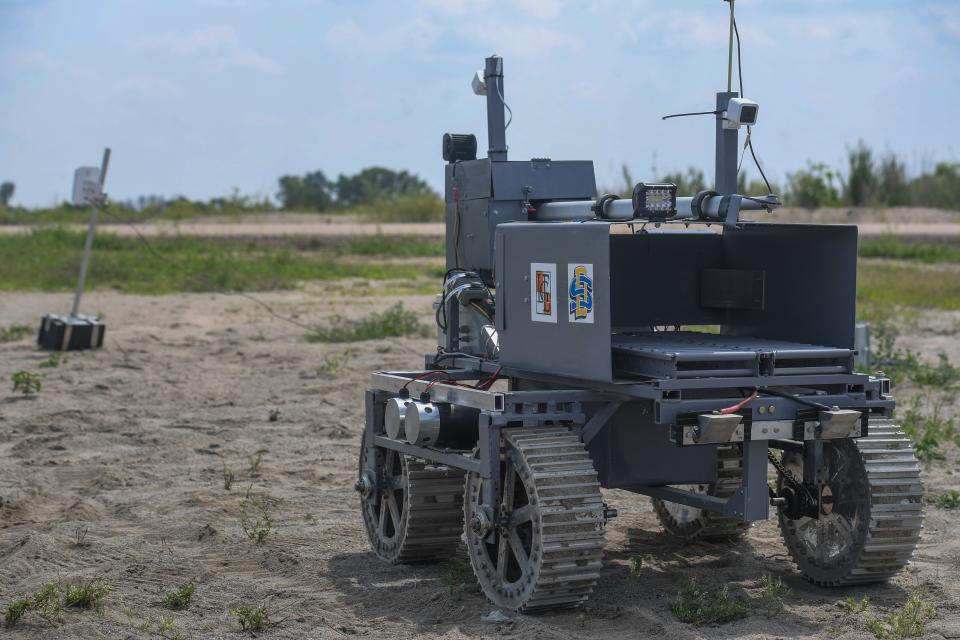
Supporting the excavator are a battery-swapping rover exchanging battery packs on the excavator, a dump truck that receives and transports material from the excavator, and a stationary battery-charging station that would sit at the top of the moon’s crater where the excavator works.
At the testing site, students and faculty run all these moving parts remotely with the use of computers, monitors, smartphones and video game controllers on-site in a tent. If SDSU won the challenge, this “battle station” — as the team jokingly refers to it — would be controlled from a ground station on Earth while the system runs semi-autonomously on the moon.
“South Dakota’s footprints will be on the moon,” Rajesh Kavasseri, associate dean for research in the SDSU College of Engineering, said of the project’s potential.
More: SDSU alum Myah Selland wins Gatorade Community Impact Award for her work with Her Turn
The team’s equipment has to run for 15 straight days and excavate 1,760 pounds of icy lunar soil each day, transporting it to a drop site one-third of a mile away to be processed at a processing plant somewhere with more sunlight and energy available on the moon, Letcher explained.
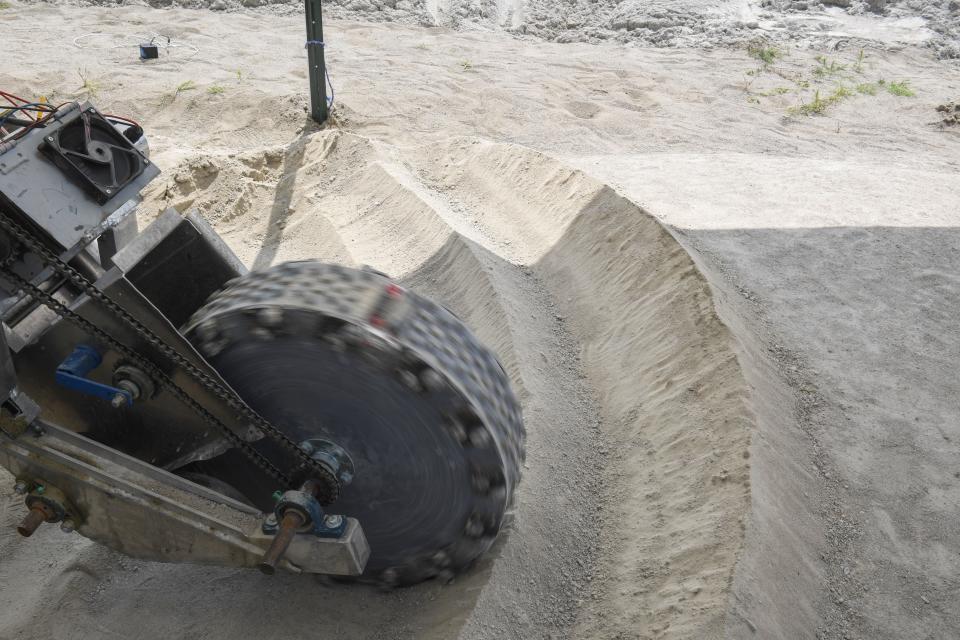
This timeline means the group starts work each day close to the sunrise and works well into the night, as late as 1 a.m. some days. Also on-site are multiple livestream cameras so judges at NASA can monitor the team and observe their progress 24/7.
So, why the interest in the moon?
Technologies and hardware from this challenge “will get us one step closer to excavating icy regolith on the lunar surface, providing critical water resources and excavation activities needed to build infrastructure on the moon,” NASA acting program manager of Centennial Challenges Denise Morris said in a press release from SDSU.
Letcher explained there’s interest in the moon because it’s a test area for getting to Mars.
“Learning to live off of Earth is a difficult task,” he said. “One of the hardest things is getting enough water for humans to live with… It’s really hard to transport water off Earth, so we’re going to have to find water sources wherever we go.”
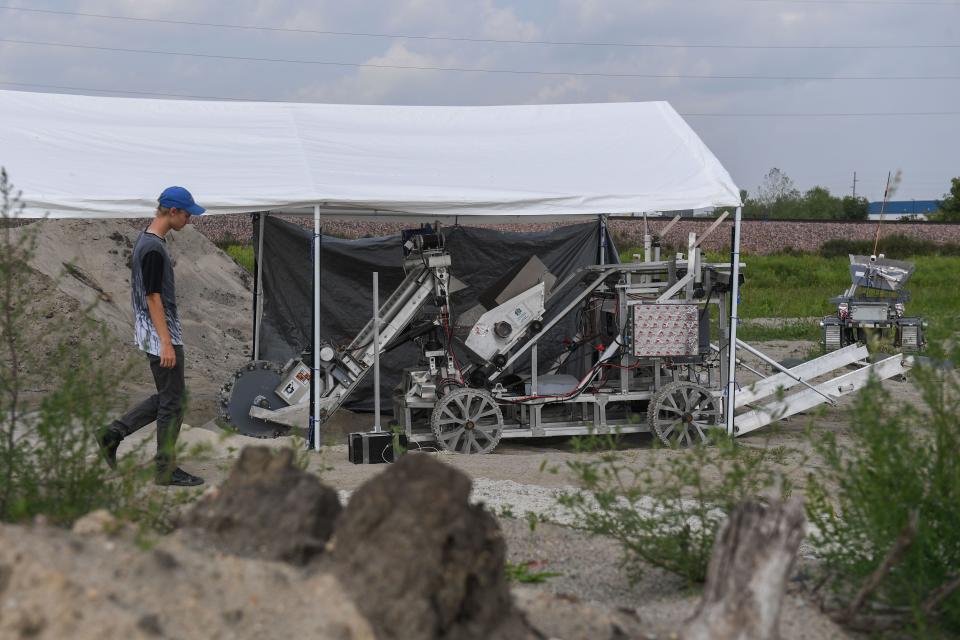
Extracting water from Mars’ surface will be different than extracting it from the moon’s surface, Letcher explained.
“Learning to live off Earth is something that we can do on the moon, where it’s a little bit less risky than Mars,” Letcher explained.
There’s lots of reasons for this challenge, and for NASA’s interests in the moon and Mars, Letcher explained.
“Maybe there’s deposits of some mineral or some precious metal that are on Mars, or a different planet, or an asteroid,” he said. “We’re learning how to move in that direction where we could maybe extract some of those things and then bring them back to Earth.”
Contest has three phases, sees SDSU up against aerospace engineering companies
The first phase of the challenge concluded in fall 2021 and saw the SDSU team win $25,000 from NASA. In that phase, the team was tasked with providing a conceptual design of how frozen water could be extracted from a lunar crater.
More: SDSU students win $25k prize from NASA for 'Break the Ice' Lunar Challenge
This second phase of the competition saw 13 U.S. teams receiving equal shares of NASA’s $500,000 prize purse. Space Trajectory took its $25,000 in winnings from the first phase of the competition, the $38,500 from NASA, a $10,000 grant from the South Dakota Space Consortium and smaller sponsor contributions to build the excavator, dump truck, battery-swapping rover and battery-charging station.
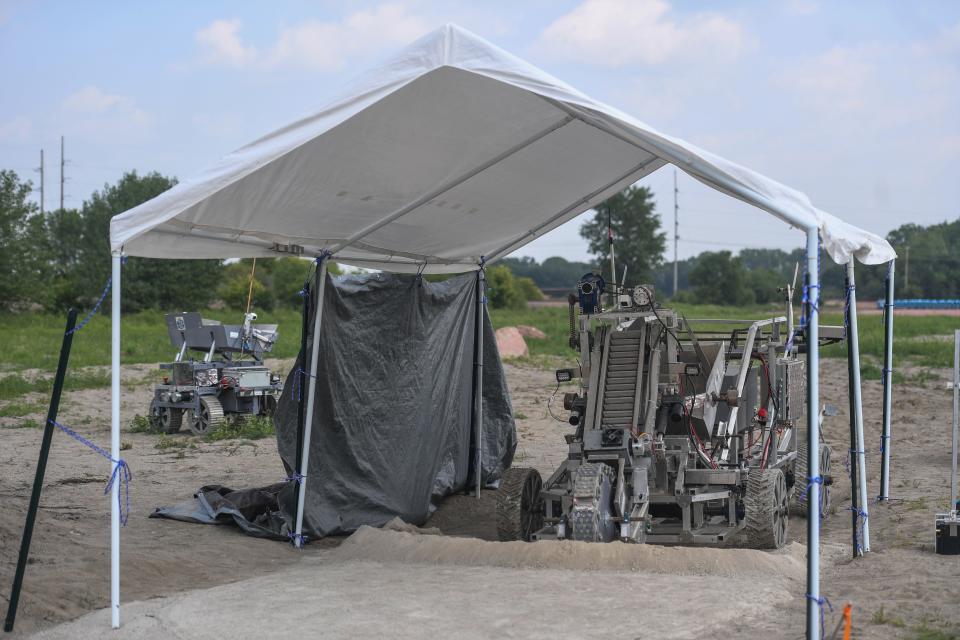
If Space Trajectory advances to the next phase of the competition, they will have to put their prototype to the test in a head-to-head onsite competition for a shot at $1.5 million in prize winnings.
Other finalists in the competition so far include the following:
Aurora Robotics, Fairbanks, Alaska
Cislune Excavators, Alhambra, California
Ice Busters, Olathe, Kansas
Lunar Wombats, Seattle, Washington
Michigan Technological University’s Planetary Surface Technology Development Lab, Houghton, Michigan
Moog Inc., Elma, New York
Moon Industry Inc., Netherlands
OffWorld Robotic Mining Team, Aldie, Virginia
Redwire Space, Jacksonville, Florida
Starpath, San Francisco, California
Team xTrac Planetoid Mines, Albuquerque, New Mexico
Team Chandra, Noida, Uttar Pradesh, India
Terra Engineering, Gardena, California
The Ice Diggers, Golden, Colorado
'We're starting to change some people's minds'
Space Trajectory includes Letcher, Allea Klauenberg, Austin Lohsandt, Ben Diersen, Ben Louwagie, Brock Heppner, Carter Waggoner, Dante Tarabelsi, Devin Lundberg, Elaine Hines, Eric Derr, John Ziegelski, Max Selbach, Parker Brandt, Tate Mueller, Tom Neumeister and Zac Bergjord.
Lohsandt, Heppner and Diersen have been with the team since its first phase in 2021. Lohsandt has described the team’s background as a variety of farm kids to tinkerers, some with experience in writing code, doing computer simulation and electrical engineering.
Most of these students and teammates have been with the project since Jan. 2022 when they took Letcher’s independent study class to start on the design work. Many of the students were also sophomores in Letcher’s mechanical engineering 230 class, where they worked on moon rovers.
“They’ve been thinking about things like dust mitigation, lack of gravity, and really frigid temperatures since we did those projects,” Letcher said in a press release from SDSU. “In the back of their minds, they’ve been developing solutions all along whether they thought about it in the front of their mind or not.”
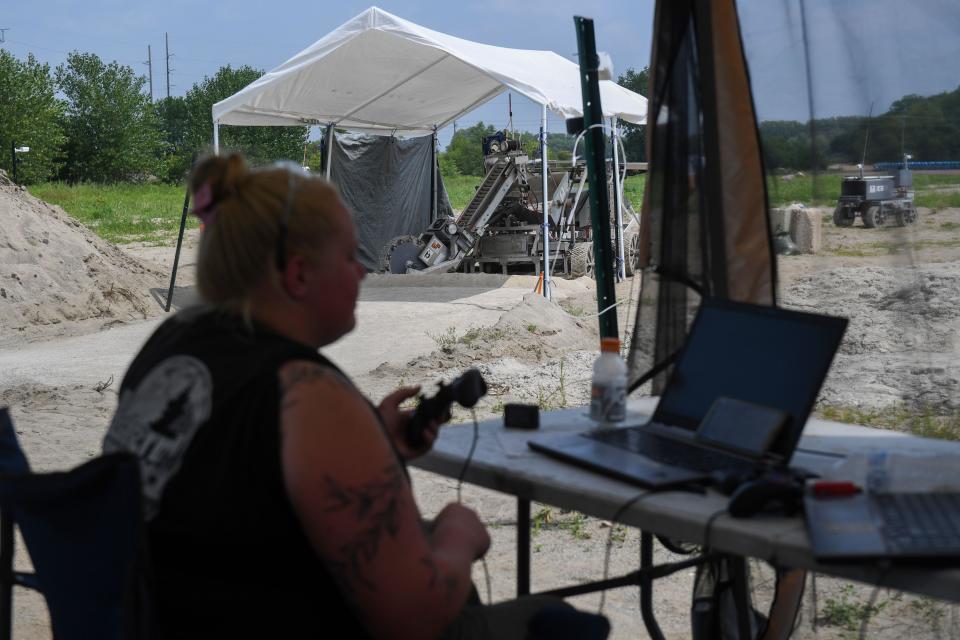
Klauenberg, a graduate mechanical engineering student, said she and her peers didn’t think they would be doing this kind of work when they came to SDSU.
“It’s honestly been the best experience,” she said. “No other class we get to design and build a rover. It’s been my favorite part of college so far.”
Waggoner, a senior mechanical engineering major, said his work with the Space Trajectory team has inspired him to be on a research and design team for power equipment when he graduates.
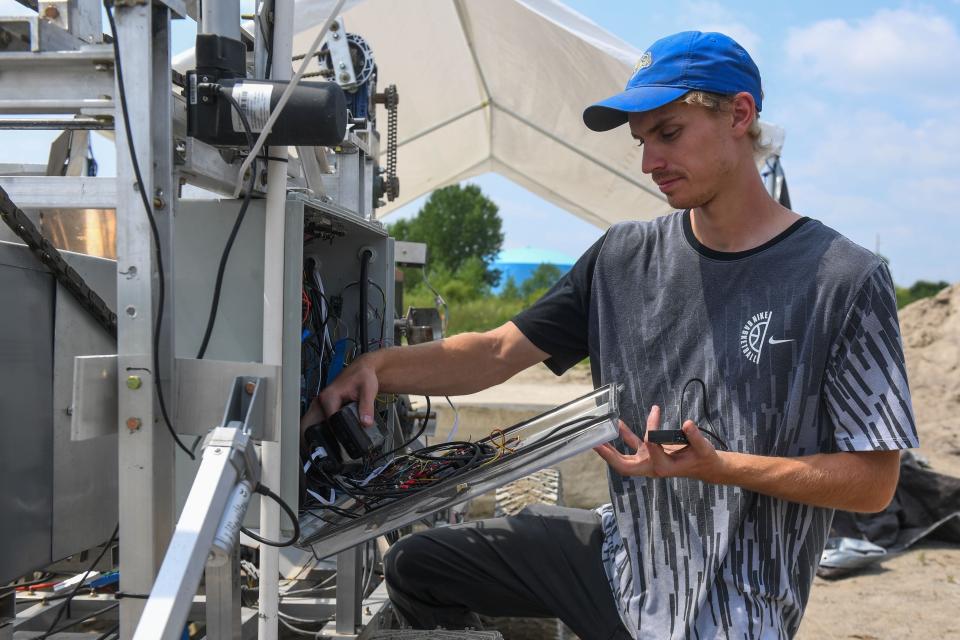
Klauenberg said moving onto phase three of the competition could mean Space Trajectory becomes its own company, and said she’d love to continue working on this project and work with NASA on other rovers for the moon or Mars.
SDSU’s progress in the challenge, up against 14 other finalists, mostly private aerospace companies and only three or four other college teams, shows that South Dakota can compete at a high level, Letcher said.
“Most people, when they think of SDSU, the first thing they think of is it’s an agriculture school,” he said. “I think we’re starting to change some people’s minds. We’re an engineering school, too. We’re able to do things that are really good, not just for engineering schools, but most of our competitors are engineering (and) aerospace companies with people who have been doing this type of work for decades, and we’re doing similar work to them.”
This article originally appeared on Sioux Falls Argus Leader: South Dakota State in NASA Break the Ice Challenge

